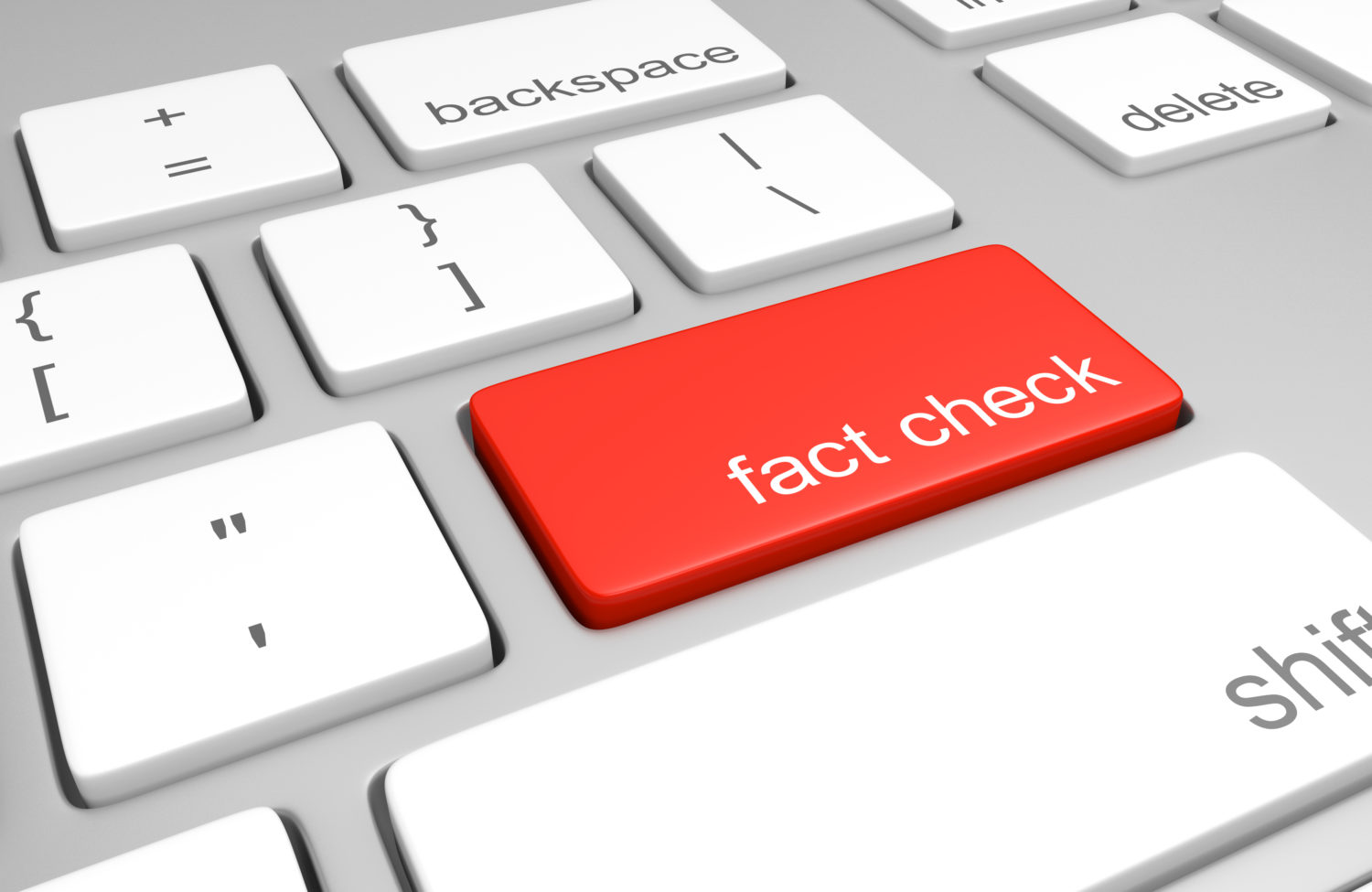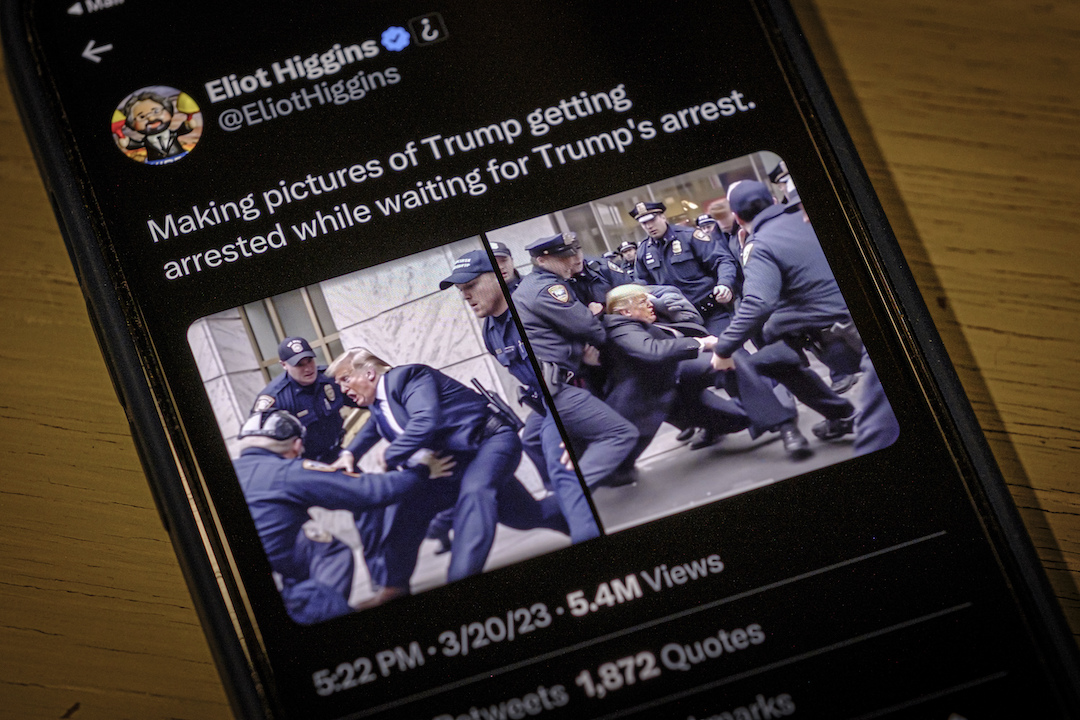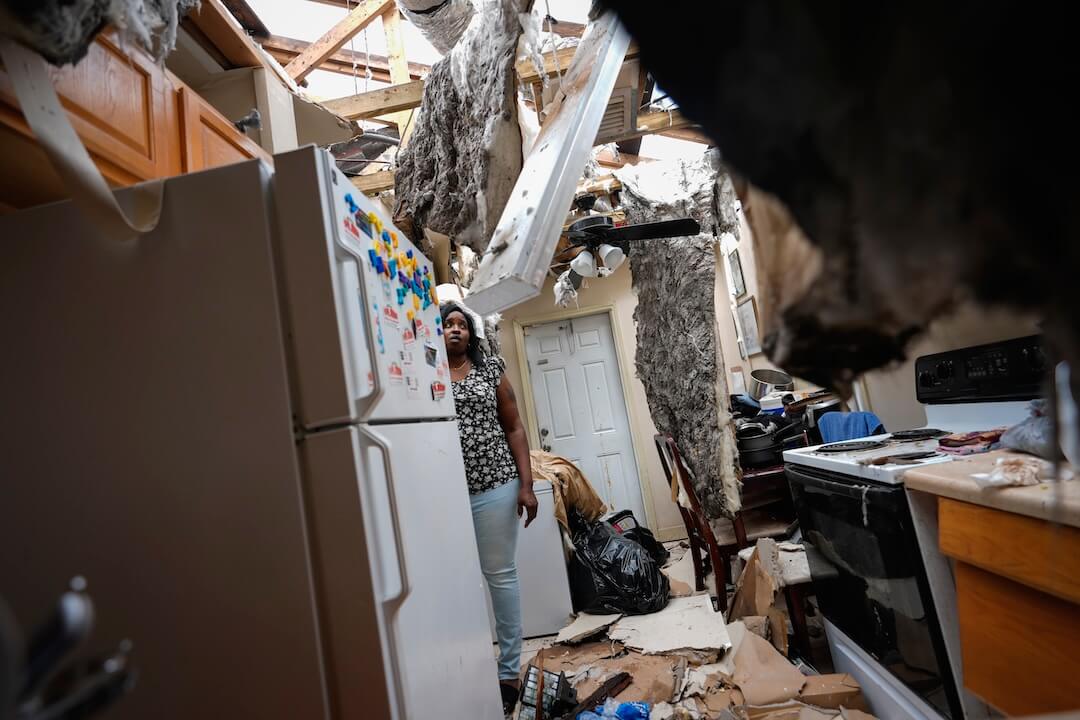There’s a promising new trend in political journalism. Instead of waiting for fact-checkers to bring on the Pinocchios and Truth-O-Meters, many Washington reporters are calling out falsehoods right in their news stories.
Call them “embedded fact-checks.” In one or two sentences, reporters are increasingly noting when a politician makes a false claim.
We analyzed stories from the AP, New York Times and Washington Post using this approach and found a steady increase since 2015.
In an April story about the federal government’s response to Hurricane Maria, New York Times reporters noted that President Trump “stated, incorrectly, that Puerto Rico had received $91 billion in aid from the federal government.” A 2018 Washington Post article about Trump’s visit to England noted that he had “again falsely stated that he had predicted Brexit one day before it happened.” A January AP news analysis about the border wall said Trump “wrongly claimed that he’d never called for the wall to be concrete. And he claimed, without evidence, that some ex-presidents had told him to push for the wall.”
But we’ve found this new debunking is a lopsided trend. Virtually all of the embedded fact-checks are about Trump. That’s problematic because it suggests that Trump is the only one being checked and the only politician spreading falsehoods. It also perpetuates the misconception that journalists are harder on Republicans.
So while the trend is encouraging, journalists need to diversify their targets. They should use the same tactic on congressional leaders and presidential candidates. This shouldn’t just be a Trump thing.
[the_ad id=”667826”]
* * *
In 2016, one of us noted the start of this trend in this article for Poynter. Fact-checking had matured into a new form of journalism, then with more than 100 dedicated outlets around the world, and political reporters had decided to join in.
That made sense because the political reporters were often more nimble. When a politician said something false in a speech or a tweet, a political reporter could check the claim on the spot. (This doesn’t work all the time, however, because some fact-checks take hours of research.)
Beat reporters provide a great service when they call out a falsehood at the moment it is first uttered. That saves readers the work of hunting for a fact-check and the quick debunking can help slow falsehoods from spreading.
To analyze the trend since 2015, we searched stories in the New York Times, Washington Post and the AP for phrases such as “falsely claimed” or “incorrectly said.” We found so many variations that it wasn’t possible to determine a precise number each year, but it was clear there was a steady increase over the past four years.
[the_ad id=”667872”]
In contrast to the sometimes-lengthy articles published by sites such as FactCheck.org, PolitiFact and the Washington Post Fact Checker, the embedded fact-checks are as short as one or two sentences.
They avoid the usual on-the-one-hand, on-the-other-hand caution of news stories and offer a clear conclusion with phrases such as “wrongly said,” “falsely said,” “inaccurately told,” “erroneously stated,” and “said, inaccurately.”
Some offer a link or explanation why the statement is false. But others simply call a statement false without offering evidence.
Nearly every embedded fact-check we found was on a claim by Trump, his aides or his supporters. A few that were not:
- A New York Times story said conspiracy theorists falsely claimed a Sandy Hook shooting victim’s death was faked as part of a scheme to make money.
- A New York Times article about an anti-vaccine rally said one pediatrician “falsely claimed that failed vaccines were producing a new strain of measles.”
- A Washington Post story on New Hampshire politics said Democrats have “falsely claimed that the bill would raise taxes on ‘most working-class families’ – only 6.5 percent of lower-income households would take a direct hit, though many taxpayers making less than $100,000 would get little.”
[the_ad id=”667878”]
Still, those were the outliers and it was disappointing to see the trend so dominated by checks on Trump. Journalists need to expand this promising new practice and hold other politicians accountable, too.
Capitol Hill reporters should scrutinize the claims of Nancy Pelosi and Chuck Schumer – as well as the claims of the Republican leaders. Business journalists should check the assertions of corporate CEOs. City hall reporters can also get into the act, verifying the claims of mayors and city council members.
We hope we’ll see more embedded fact-checks. We just hope they won’t all be about Trump.
Julianna Rennie is a journalism student at Duke University where she is the student editor of The 9th Street Journal. Bill Adair is the Knight Professor of Journalism and Public Policy at Duke and the creator of PolitiFact. He helps direct the North Carolina Fact-Checking Project, a partnership of the Duke Reporters’ Lab, McClatchy Carolinas and PolitiFact.








“It also perpetuates the misconception that journalists are harder on Republicans.”
It perpetuates the *impression* (more accurate than “misconception”) that journalists are harder on Republicans because it counts as an evidence that journalists are harder on Republicans.
It’s ironic that the PolitiFact’s creator, Bill Adair, shares the byline. Adair’s PolitiFact has a history of giving poor “Truth-O-Meter” ratings to unsupported claims, placing the burden of proof on the one making the claim.
Where do we go for evidence journalists are not tougher on Republicans than on Democrats? Did Rennie and Adair not ask themselves “Is that true?” while reviewing the draft?
Did they simply trust that the Poynter audience would nod along in agreement?